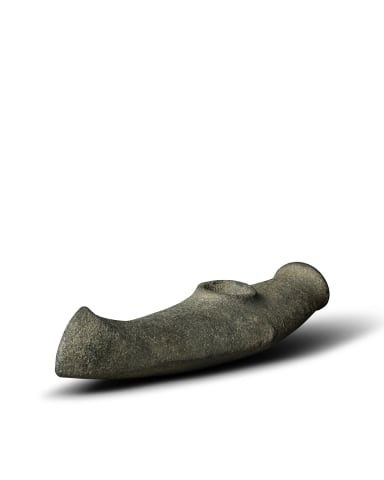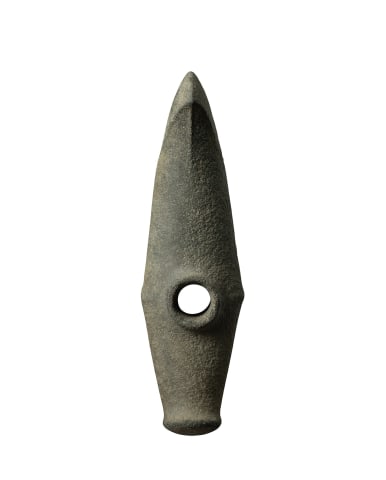Further images
Shank-hole axe head from the Swedish-Norwegian battleaxe
culture. The blade is down-bent, the topside is flat and the
underside has lightly curving edges, the body widening
towards the hole and narrowing to a pointed tip, giving it
the suggestive shape of a boat or canoe. Delicately carved
with a cylindrical collar around the central shaft hole, the
butt on a raised plane, a raised central rib running the down
the centre of the upper surface. Intact.
This assuredly carved axe was intended for ceremonial or
votive purposes rather than as a practical weapon or tool. Very
little art survives from the European Neolithic age; boat-axes
such as this are therefore much admired and sought after
works that demonstrate the skill of the Nordic craftsmen.
Provenance
Found prior to 1887 near Ronneby, Sweden
Lars Otto Johan Holst (1863-1936), Ronneby, Sweden
Holst was a veterinary surgeon in Ronneby, southern Sweden from around 1887. Mr Holst took a strong interest in the prehistory of ancient Scandinavia and formed a magnificent collection of early Stone Age artefacts. He obtained these objects locally, partly through his own private excavations, and partly as payment for work done in his service as a vet between 1887-1929.





